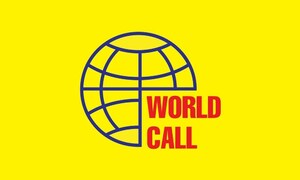The view of most analysts is that Nawaz Sharif is poised to become Prime Minister (PM) for the fourth time as a result of the general elections in February 2024. But while this consensus rests on solid grounds where the political equation of the main parties’ prospects in that election go, there may still be a slip or two between the cup and the lip. First the positives.
All other things being equal (which, some might object, is seldom the case in Pakistan), Nawaz Sharif’s Pakistan Muslim League-Nawaz (PML-N) still enjoys its considerable traditional constituency in the largest by population (and therefore seats in parliament) province, Punjab.
If that reading is correct, a further smattering of seats from the other three provinces should see the PML-N home and dry. The party leadership has been reaching out to Balochistan, Sindh, and even the Istehkam-i-Pakistan Party of Jehangir Tareen et al and Pakistan Muslim League-Quaid (PML-Q) of Chaudhry Shujaat in Punjab for seat adjustments.
These manoeuvrings are the traditional stuff of our electoral politics, where principles and ethics always run a poor second to pragmatic (if not opportunist) accommodations with parties not hostile to each other. If any province so far shows signs of benign neglect by the PML-N, arguably it is Khyber Pakhtunkhwa (KP).
On the other hand, the only potential rival to the PML-N in Punjab, Imran Khan’s Pakistan Tehreek-e-Insaf (PTI) is under the hammer and unlikely to receive ‘a level playing field’ it has been baying for since at least the tentative date of the general elections became a near certainty.
The Pakistan People’s Party (PPP) of Asif Zardari and Bilawal Bhutto Zardari has yet to recover from its political decimation years ago in Punjab. It is once again likely to secure its stronghold in Sindh, but precious little else.
Now the obstacles to the seemingly logical return of Nawaz Sharif to power. The PML-N seems worried by the snail’s pace at which the appeals against conviction of Nawaz Sharif appear to be moving. The party’s concern is Nawaz Sharif may be left hanging in the air and unable to himself fight the election if he is not cleared of all the charges and prison sentences he was graced with to accompany his ouster in 2017, ostensibly on the basis of the revelations in the Panama Papers, but in fact through the Supreme Court’s (SC’s) legerdemain in pronouncing him not sadiq and ameen (truthful and honest) and therefore disqualified because he had not declared the unclaimed salary from his son’s company abroad.
At the time the Chief Justice of Pakistan (CJP) Asif Saeed Khosa’s SC pronounced the verdict, I had described the decision in the vernacular as “Khodia pahar tay niklia chooha” (A mountain was dug up but all that was found was a mouse). Such pronouncements have unfortunately besmirched the fair face of the judiciary in our history with monotonous regularity.
It remains to be seen if CJP Qazi Faez Isa’s SC will carry through on its promise to clean up these Augean stables of the judiciary’s past. But even if the glacial pace (inherent and sometimes deliberate) of our judicial processes keeps Nawaz Sharif out of the February 2024 electoral fray, would anyone be in any doubt who would call the shots in the next PML-N government even if it is from behind the curtain? Naturally, the PML-N would prefer the legitimacy a Nawaz Sharif-led government would enjoy. But if push comes to shove, the party can and perhaps should prepare a Plan B for a belated occupation of the PM’s chair by their unchallenged leader Nawaz Sharif.
Now to what a Nawaz Sharif-led (immediate or belated) PML-N government is likely to do and the immense, unprecedented challenges it would confront. First and foremost, as Nawaz Sharif has himself declared the other day, he reiterated his favourite theme of improving relations with all Pakistan’s neighbours, especially India. This is significant because arguably, it is Nawaz Sharif’s consistent efforts in this regard, outreach to India, that led to his three previous dismissals and ousters from power.
Why then, would he tread on such slippery ground again, even before the outcome of the polls? The context of this conundrum is that Nawaz Sharif represents that considerable section of the Pakistani bourgeoisie that has consistently maintained that it is in the country’s paramount interest to turn the corner and normalise relations with India.
As justification for such a stance, this section of our industrial and commercial classes points to the unarguable benefits that potentially await in opening up bilateral trade, investment, and movement of goods and services bilaterally as well as onwards to Central Asia and beyond (our very own Belt and Road Initiative!).
Of course peace and normalisation with India implies centrally compromise over Kashmir, which, if the history of overt and covert bilateral dialogues on the issue are any indicator, would mean no exchange of existing territory held by either side in the long suffering state, accompanied by mutual demilitarisation of the Line of Control (LoC) and rendering it a soft ‘border’ to allow the two-way movement of goods and long divided Kashmiri families.
It is one of the ironies of history that the author of the Kargil misadventure, the late General Pervez Musharraf, after he had grabbed power through his military coup in 1999, followed it up with a journey to the Agra summit with Indian PM Atal Behari Vajpayee, where precisely these contours of a Kashmir solution came within a whisker’s breadth of being clinched.
Why Nawaz Sharif may feel he is on firmer ground this time in returning to his favourite theme of peace and normalisation with India is the strategic shift in the military’s thinking on the issue. Starting with former Chief of Staff General Qamar Javed Bajwa, the muted signals emanating from the military indicate that the premier defence institution has arrived at a reality check on the prospects of war and conflict with our eastern neighbour.
Although the nuclear deterrent arguably (despite, and perhaps because of the Kargil experience) militates against an all-out war between Pakistan and India, even if the nuclear deterrent is ignored for the sake of argument, a conventional all-out war is to be avoided because of Pakistan’s lack of strategic depth and sufficient wherewithal to wage a protracted war.
If this assessment is correct, Nawaz Sharif’s idea of rapprochement with India may well have won the day, in the process weakening the concerns of the past that it might lead to negative political consequences here.
While this is a hopeful scenario, a lot depends for the moment on the 2024 general elections in both Pakistan and India, the outcome probably birthing a Nawaz-Modi re-engagement. That would indeed be a positive and hopeful scenario for both countries, the region and the world. Fingers crossed.
Copyright Business Recorder, 2023
rashed.rahman1@gmail.com , rashed-rahman.blogspot.com























Comments
Comments are closed.